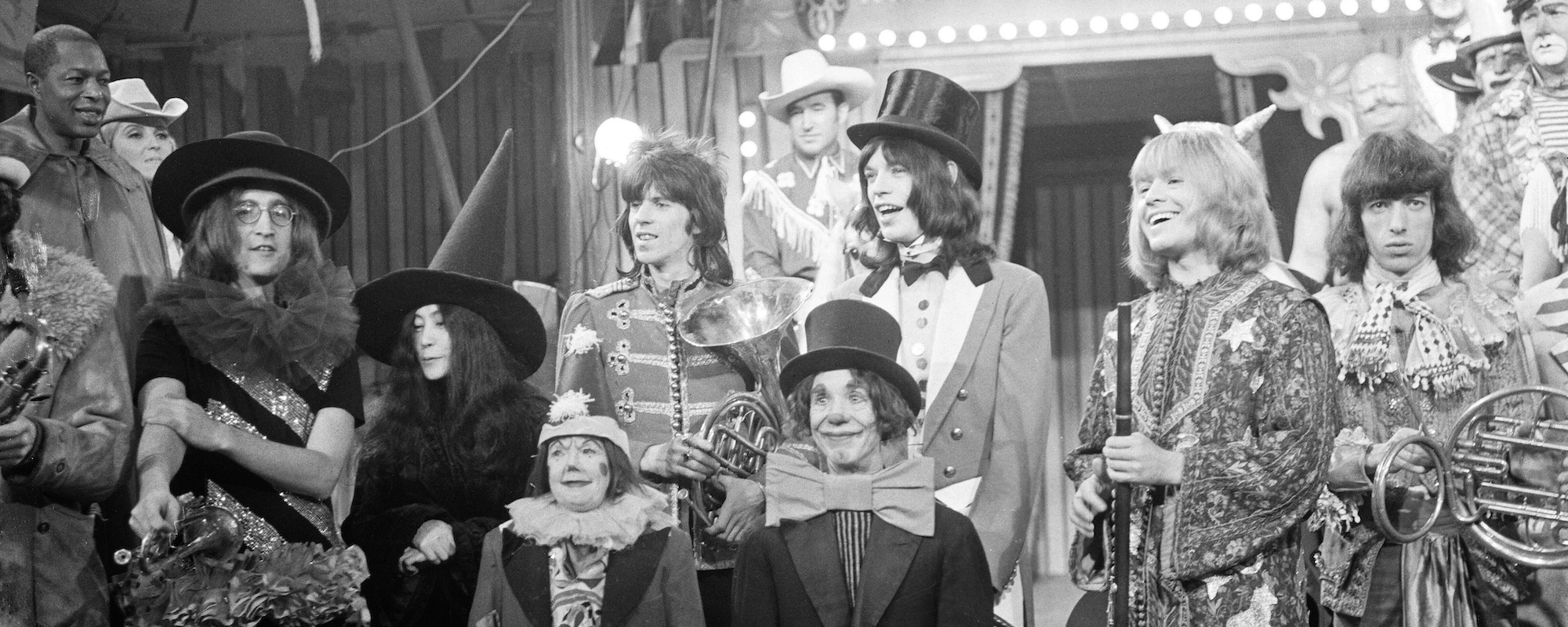These days, virtually every American town within an hour’s drive of a radio tower has a classic rock radio station. Songs like “More Than a Feeling,” “Don’t Stop Believin’,” and “Hotel California” have become staples of those stations, hitting the airwaves on a daily basis, stitching the sounds of the 1970s and early 1980s into the fabric of the modern day. Classic rock isn’t just a radio format; it’s a time warp, capable of bringing us all back to the era of witchy women and wayward sons.
Videos by American Songwriter
For those looking to fire up their own time machines, here are five definitive albums from the classic rock era. No radio required!
5. Toys in the Attic, Aerosmith
Featuring “Sweet Emotion” and the original version of “Walk This Way,” Toys in the Attic turned Aerosmith into a commercial juggernaut during the mid-1970s. The album’s sound was rooted in raunch, riffs, and raw blues, which attracted rock ‘n’ roll’s wilder fans. Meanwhile, the melodic songwriting of Steven Tyler and Joe Perry helped soften the band’s dangerous edges , making Aerosmith the sort of hard-living band (Perry and Tyler were dubbed the Toxic Twins, after all) that appealed to more conservative listeners, as well.
Perhaps most importantly, Toys in the Attic made an absolute star out of frontman Tyler, whose raspy voice, sinewy stage maneuvers, and overall flamboyance would go on to influence not only his classic rock peers, but also the generation of hair metal acts that followed.
4. Cosmo’s Factory, Creedence Clearwater Revival
Released in July 1970, Creedence Clearwater Revival’s fifth album bridged the gap between the Woodstock generation and the classic rock era. “Who’ll Stop the Rain,” “Up Around the Bend,” and “Lookin’ Out My Back Door” all became platinum hits in America, where demand for John Fogerty’s swampy mix of blues, country, folk, and roots-rock had been steadily building since 1968.
Although Creedence Clearwater Revival technically hailed from California, the band’s twangy guitars and countrified songwriting made CCR an early pioneer in southern rock, too. Artists like Tom Petty and John Mellencamp would eventually follow in Creedence’s footsteps, blurring the lines between genre and geography, and jumpstarting their respective careers during the classic rock era with songs that blended heartland textures and big-city bombast.
3. Escape, Journey
It’s no surprise that Infinity, Journey’s initial album with singer Steve Perry, marked the band’s first time reaching the Top 40. Perry was a world-class vocalist who grew up idolizing soul singers like Sam Cooke, so he helped push Journey’s music away from the proggy, jazz-friendly experimentation that defined the band’s early work. A number of radio hits followed, but it was’t until Escape—Journey’s diamond-certified smash from 1981—that the band shaped the rock ‘n’ roll mainstream to suit its own needs.
[RELATED: “Don’t Stop Believin’” Aside, Here Are 10 Need-to-Know Journey Songs]
If classic rock began during the early 1970s as a genre that was somewhat adjacent to heavy metal and blues, then Escape reoriented its direction altogether, with Journey skirting closer to soft rock with hits like “Open Arms” and “Who’s Crying Now.” The album’s biggest smash, of course, was “Don’t Stop Believin’,” a rock anthem that’s been rendered immortal not only by decades of heavy radio airplay, but also by its inclusion in The Sopranos, Glee, The X Factor, and numerous sporting events. Although softer and slicker than many classic rock releases, Escape earns its spot on this list by changing the genre during its final formative years.
2. Who’s Next, The Who
Released two years after the rock opera Tommy, Who’s Next was another experimental release for The Who. The band’s signature mix of pummeling percussion and amplified guitar remained intact, but songs like “Won’t Get Fooled Again” also made room for synthesizer, which helped kickstart a new decade of forward-thinking rock albums. The album’s centerpiece is “Baba O’Riley,” a wildly progressive track for the early 1970s with a five-minute running time that was whittled down from the 30-minute original.
1. Boston, Boston
Boston’s introduction to the mainstream was largely masterminded by Tom Scholz. The guitarist had studied mechanical engineering at MIT and worked for the Polaroid Corporation before building a recording studio in his basement. It was there, without the knowledge of Boston’s record label, Epic, that he recorded the instrumental tracks for the self-titled debut album, Boston. Brad Delp, the band’s golden-voiced frontman, overdubbed his vocals at a studio in Los Angeles, and the rest is classic rock history.
For an album that was essentially homemade, the eponymous platter sounds sparklingly huge, filled with harmonized guitar riffs, layered vocal harmonies, and melodies meant for an arena. Today, all eight of the album’s tracks have become staples on classic rock radio, with songs like “More Than a Feeling” and “Rock & Roll Band” receiving the most airplay. Deeper cuts like “Hitch a Ride” still pack a punch, though, thanks to a lush chorus that’s equal parts psychedelic and pastoral.
Photo by Richard Creamer/Michael Ochs Archives/Getty Images













Leave a Reply
Only members can comment. Become a member. Already a member? Log in.